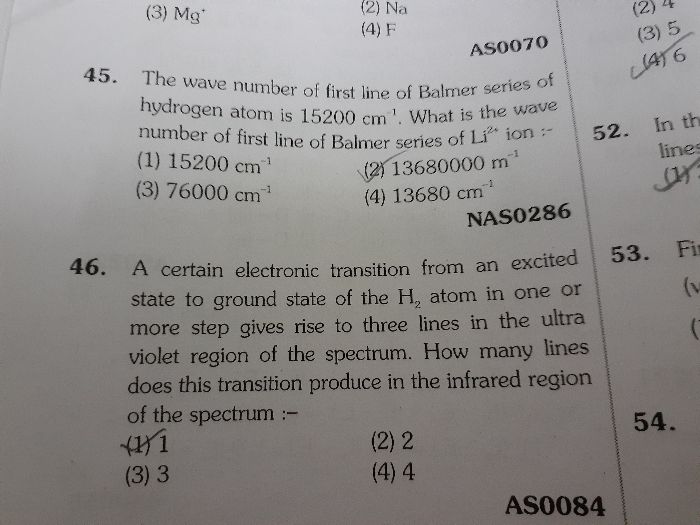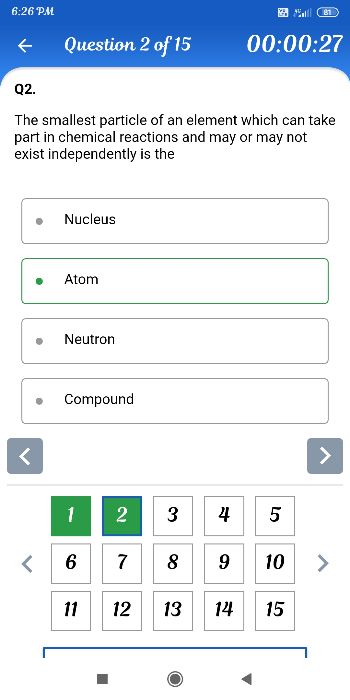CBSE Class 11-science Answered
Introduction to Molecular Orbital Theory
Molecular orbital theory is used to describe the atoms in terms of electronic configuration of electrons and the orbital arrangements. The orbitals give a clear picture of the geometry of the molecules. The molecular orbitals are obtained by the combination of atomic orbitals.
:-The molecular orbitals are filled in such a way that the energy of the molecule is minimum.
:-Orbitals which have the same energy are half filled with parallel spin before they begin to pair.
:-In an orbital there can be a maximum of two electrons. :-The linear combination of atomic orbitals is employed to form the molecular orbitals.
:-There are two types of molecular orbitals-
I) Bonding molecular orbitals And
2) Anti-bonding molecular orbitals
In case of bonding molecular orbitals, the electrons spend most of their time in the region between the two nuclei. On the contrary, in case of anti bonding molecular orbitals, the electrons spend most of the time away from the nuclei.
Points to Remember on Molecular Orbital Theory
1. Bond Order = (no. of bonding electrons – no. of antibonding electrons) / 2
2. Bond order is useful in predicting the stability of the molecules.
If B.O = 0, then the molecule is unstable.
If B.O > 0, then the molecule is stable.
Thus, higher the bond order, greater will be the stability of the molecule.
3. Atoms or molecules which consist of paired electrons are called as “Diamagnetic” and which consist of one or more unpaired electrons are known as “Paramagnetic”.
4. Saturated molecules:- The molecules in which all the valence electrons are involved for single bond formation. Non-bonded lone pairs are absent. These molecules have less energy, hence are more stable.
The relative energies of molecular orbitals depend upon the following two factors:
(i) the energies of the atomic orbitals combining to form molecular orbitals.
(ii) the extent of overlapping between the atomic orbitals.
The greater the overlap, the more the bonding orbital is lowered and the antibonding orbital is raised in energy relative to atomic orbitals. For e.g., the extent of overlapping in case of s - orbital is more than that in p - orbital. Consequently, the energy of a s2pz is lower than the energy of bonding p2px or p2py MOs.
Now, 1s atomic orbitals of two atoms form two molecular orbitals designated as s1s and s*1s. The 2s and 2p orbitals (eight atomic orbitals on two atoms) form four bonding molecular orbitals and four antibonding molecular orbitals as:
Bonding MOs:
s2s, s2pz , p2px , p2py
Antibonding MOs:
s*2s, s *2pz, p*2px, p*2py
The energy levels of these molecular orbitals have been determined experimentally by spectroscopic methods. The order of increasing energy of molecular orbitals obtained by the combination of 1s, 2s and 2p orbitals of two atoms is:
s1s, s*1s, s2s, s*2s, s2pz, p2Px = p2py, p*2px = p*2py, s*2pzs1s, s *1s, s 2s, s 2s, p2Px = p 2py, s *2pz, p *2px = p *2py, s *2pz.

But for molecules O2 onwards (O2, F2), the first order of energies of MOs is correct.
Thus, for diatomic molecules of second period (Li2 to Ne2), there are two types of energy levels of Mos. For molecules Li2, Be2, B2, C2 and N2 the molecular orbital energy level diagram is shown in figure 1.15 (a).
fig 1.15 (a) - Molecular orbital energy level diagram for Li2, Be2, C2 and N2 molecules
On the other hand, for the molecules O2, F2 and Ne2 the molecular orbital energy level diagram is shown in fig.1.15 (b).
fig 1.15 (b) - Molecular orbital energy level diagram for O2, F2 and Ne2 molecules
The main difference between the two types of sequences is that for molecules O2, F2 and Ne2 the s2pz, molecular orbital is lower in energy than p2px and p2py MOs while in the case of molecules Li2, Be2, B2, C2 and N2, s2pz, molecular orbital has higher energy than p2px and p2py MOs.









